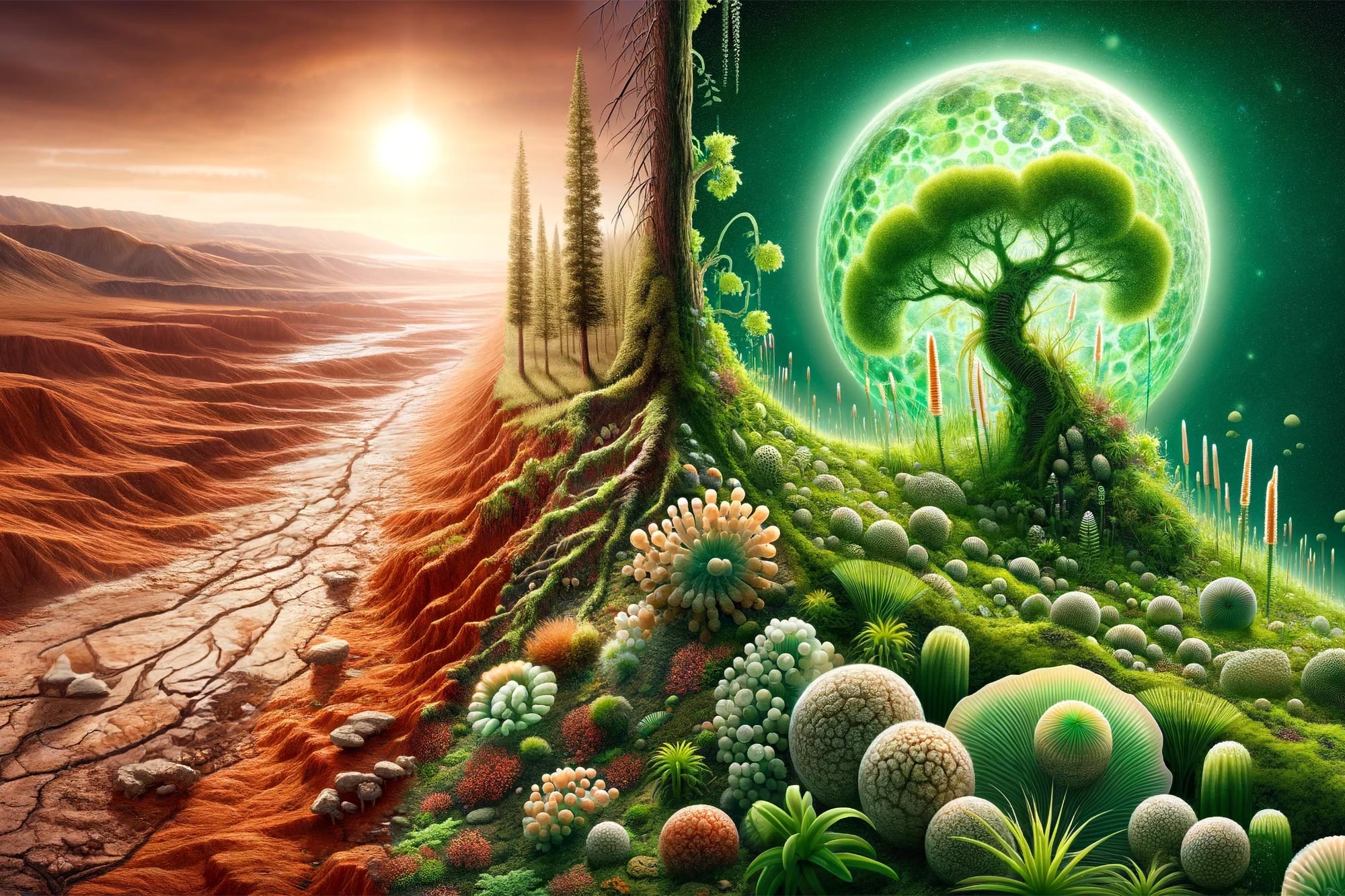Scientists have discovered ancient microfossils in Western Australia, providing new insights into the emergence of complex life during the Great Oxidation Event. These findings, which show similarities to algae, could redefine our understanding of the evolution of life and the possibility of complex life forms in the universe.
Microfossils found in Western Australia indicate a major jump in the complexity of life during the Great Oxidation Event, indicating the early evolution of complex organisms such as algae.
Microfossils from Western Australia may capture a jump in the complexity of life that coincided with a rise in oxygen in Earth’s atmosphere and oceans, according to an international team of scientists.
The results were published in the journal GeologyThis image provides a rare window into the Great Oxidation Event, a time roughly 2.4 billion years ago when the concentration of oxygen on Earth increased, fundamentally changing the planet’s surface. Scientists believe this event led to a mass extinction and opened the door to the evolution of more complex life, but there was little direct evidence in the fossil record before the new microfossils were discovered.

Microfossils are found within black flint like the one shown here. Credit: Erica Barlow
The first direct evidence linking environmental change to complex life
“What we show is the first direct evidence linking the changing environment during a major oxidation event to increased complexity of life,” said corresponding author Erica Barlow, an associate research professor in Penn State’s Department of Earth Sciences. “This is something that has been hypothesized, but there is little in the fossil record that we have not been able to test.”
Compared to modern organisms and algae
When compared to modern organisms, the microfossils more closely resemble a type of algae than simpler prokaryotic life — organisms like bacteria, for example — that existed before the big oxidation event, the scientists said. Algae, like all other plants and animals, are eukaryotes, which are more complex organisms whose cells contain a membrane-bound nucleus.
Scientists said more work is needed to determine whether the microfossils were left by eukaryotic organisms, but this possibility would have major implications. It would push the eukaryotic microfossil record back by 750 million years.

The Hammersley Range, a mountainous region in Western Australia, where the researchers conducted their work. Credit: Erica Barlow
“The microfossils bear a remarkable resemblance to a modern family called Volvocaceae,” Barlow said. “This suggests that the fossil may be an early eukaryotic fossil. This is a big claim, and something that needs more work, but it raises an exciting question that the community can build on and test.”
Barlow discovered the rock containing the fossils while conducting her undergraduate research at the University of New South Wales (USNW) in Australia, and conducted the current work as part of her doctoral work at UNSW and then while working as a postdoctoral researcher at Penn State.
Implications and future research
“These specific fossils are remarkably well-preserved, which allowed for a combined study of their morphology, composition and complexity,” said Christopher House, a professor of earth sciences at Penn State and co-author of the study. “The results provide a fascinating window into the changing biosphere billions of years ago.”
The scientists analyzed the chemical composition and carbon isotopic composition of the microfossils and determined that the carbon was created by living organisms, confirming that the structures were indeed biological fossils. They also revealed insights into the habitat, reproduction and metabolism of microorganisms.
Barlow compared the samples to microfossils before the major oxidation event and was unable to find similar organisms. She said the microfossils she found were larger and had more complex cell arrangements.
“The record seems to reveal a wave of life — there is an increase in the diversity and complexity of this fossilized life that we are finding,” Barlow said.
Compared to modern organisms, microfossils have clear similarities to algal colonies, Barlow said, including the shape, size and distribution of both the colony and individual cells and the membranes around both the cell and the colony.
“They have a remarkable similarity, and by this method of comparison, we can say that these fossils were relatively complex,” Barlow said. “There is nothing like it in the fossil record, however, it has striking similarities to modern algae.”
Broader implications for understanding life on Earth and beyond
Scientists said the findings have implications for how long it took complex life to form on early Earth — the oldest uncontroversial evidence of life is 3.5 billion years old — and what the search might reveal about life elsewhere in the solar system.
“I think finding a fossil this relatively large and complex, relatively early in the history of life on Earth, kind of makes you wonder — if we find life somewhere else, it might not just be prokaryotic bacterial life,” Barlow said. . “There may be a chance that there is something more complex preserved – even if it is still microscopic, it may be something of a slightly higher order.”
Reference: “Distinctive microfossils support Paleozoic emergence of complex cellular organization” by Erica V. Barlow, Christopher H. House, Ming-Chang Liu, and Maxwell T. Witherington, and Martin J. Van Kranendonck, October 6, 2023, Geology.
doi: 10.1111/gbi.12576
Maxwell Witherington, staff scientist at Penn State, also contributed; Ming Chang Liu, a scientist at Lawrence Livermore National Laboratory; and Martin Van Kranendonck, a professor at the University of New South Wales in Australia.
Australian Research Council, NASA The National Science Foundation provided funding for this work.

“Typical beer advocate. Future teen idol. Unapologetic tv practitioner. Music trailblazer.”






More Stories
NASA’s Perseverance rover has found a rock on Mars that may indicate ancient life.
Northern Lights May Shine in Some States Tonight
NASA Releases Never-Before-Seen Images of the Peacock Galaxy 25 Years After Chandra X-ray Observatory Launch